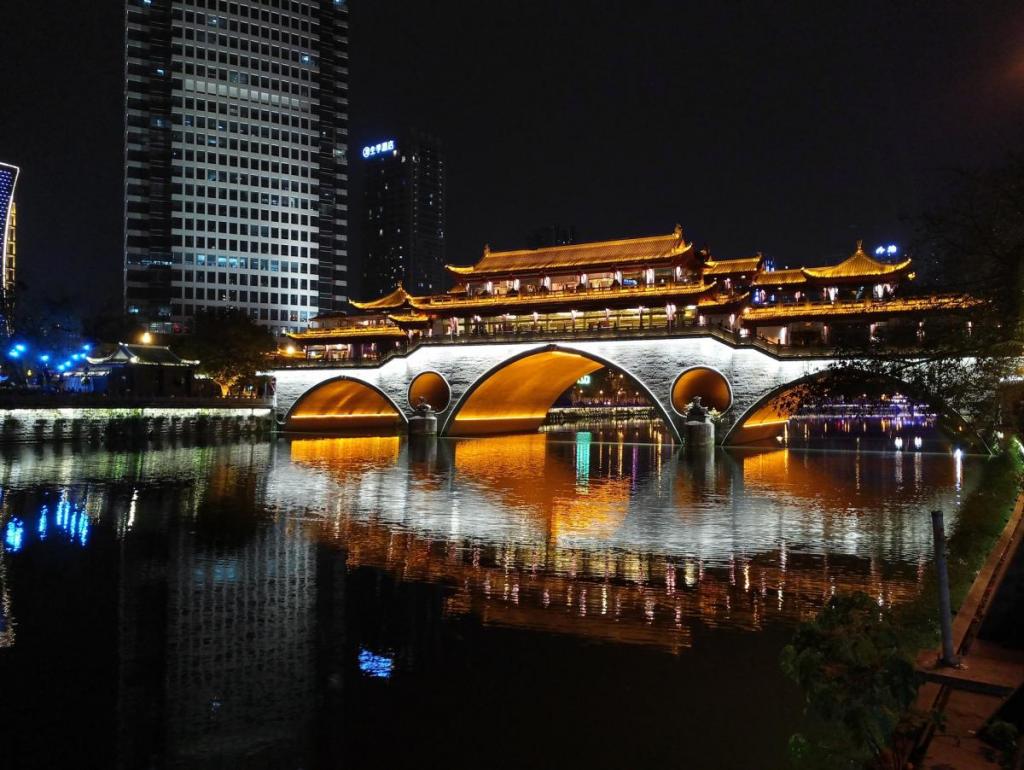Recovering the Sichuan decorated satin and dresses: a factual and spiritual discovery
In modern society, it is not surprising that people are familiar with all kinds of fashionable and popular sportswear. But what about the ancient Chinese society? Was there also a special polo sportswear?

The answer is certainly YES.
In the historical records and poetries of the time, it is not uncommon to find stories of people wearing sportswear to play certain sports. In addition to have the same colored jersey for team’s players, texture and styles had to be consistent.
The Dongjing Menghua Lu seems to have on record that: “players wore red or blue short Chinese-style coat or satin jackets, or any satin item of clothing.”
During the Ming Dynasty, Wang Fu’s poem “Seeing Riding and Shooting and Ball Hitting Banquet on Dragon Boat Festival" also described the shape of the sportswear that was in use as a "satin clothing with narrow sleeves".
The narrow sleeve is typical of military uniforms, as to indicate that the intensity of the ancient games is no different from the one of war. As for the shoes worn in the ancient polo matches, they were generally knee-high boots. Song Historian Lizhi called them "Black Leather Boots".
The ancient polo players wore ball caps called ‘putou’. In the pictures of polo painted drawn on the walls of the tomb of the Prince of the Tang Dynasty, Xi'an Zhang Huai, the hitters were wearing this kind of headgear ‘putous’.
During the Song Dinasty, in Huizenga’s "Palace Poem", the costumes the players wore had "a treasure like belt, putous and satin”, this to show that players wore gorgeous sportswear made from satin, a belt inlaid with jade, and the ‘putou’ ball cap.
In ancient times, sportswear was highly valued, something that has left traces in the way of modern-day polo. Modern polo rules say that athletes must wear soft wooden polo caps, otherwise they cannot participate in the competitions. In fact, the caps of players of ancient polo games were made of paulownia wood.
The softwood ball cap used in the modern regulations is actually an inherited putou, built with modern materials.
The modern polo competition also requires athletes to wear leather riding boots. No matter how fine the line is, these players are wearing are still wearing leather boots, it is hard to say that this requirement doesn’t follow in the legacy of the ancient Chinese players that wore the black leather boots.
It is worth noting that the top high-quality products of polo suits in ancient China were all from Chengdu!
In his masterpiece Research on Ancient Chinese Costumes, the famous writer Shen Congwen once quoted an excerpt of historical records from Tang Shu Jingzong Ben Ji:
“in Aparin in the Changqing Fourth Year in April, Du Yuanying, the Xichuan Military Governor, Du Yuanying tribute five hundred piece of sportswear".
This illustrates Chengdu during the Tang Dynasty not only as the place of a developed textile industry, but also of a prosperous garment industry producer.
Du Yuanying used the sportswear made by the artisans of satin as a tribute to the imperial court. The number of craftsmen was up to 500, and Tang Jingzong himself also wore a Chengdu-made polo suit to play.

With the strength of the Tang Dynasty, Chang gathered famous craftsmen from Suzhou and Hangzhou, but still chose to make Chengdu the designated supplier. This made Chengdu the obvious leader polo clothing making.
What did the top horse sportswear, caps and boots made in Chengdu look like in ancient China?
In order to obtain detailed information on what ancient polo suits looked like, equestrian expert Shuai Peiye went to Beijing in 1983 to ask for help from Shen Congwen who was the maximum authority on ancient Chinese clothing.
At that time, Shen Congwen had had a stroke and was lying in bed, but he was unexpectedly enthusiastic and modest his findings. He gave Shuai Peiye his knowledge and years of research on the ancient Chinese clothes and costumes and was a great support to Shuai Peiye in his research.
Shuai Peiye revealed that in order to restore the polo suit, he collected more than 600 ancient polo paintings, and went to the Chengdu Satin factory to select the exact Tang Dynasty pattern.
Then, he went to the drama costume tailors to find skilled craftsmen, along with professors from the archaeological community to come and visit the excavation site of each ancient tomb. This to avoid any mistake in every joint, seam, strap and button of the recreated sportswear.
After a detailed and intense gathering of information, it took one month and a half to hand-sew the antique Tuanhua Green Satin polo suit. This polo suit was opened in 1990 at the China Sports Museum, to celebrate the 11th Asian Games in Beijing, an unveiling which surprised all of Asia.
Nowadays, through this exquisite Tuanhua Green Satin polo suits, we have been able to obtain the precious details of many ancient polo costumes: for example, the polo suit has a small round collar that fits the neck, this to be more compact and easier to move in.
Every opening inside and outside of the suit is basically connected by a buckle and an ankle strap, which is always firmly fastened, and even if it is strenuously moved, it will not become loose.
The two sides of the suit have a high slit for an easier riding experience; and the black leather boots, put together by sewing six pieces of leather are essential for the polo suit to be complete. The styles of the putous show us the different roles inside a polo team, the captain wears a folded putou, and the other players wear a long-foot putou.
More importantly, Chengdu's exquisite craftsmanship of decorated satin added the many beautiful colors to the ancient polo suits. Black, green, red, purple and other rich colors, elegant patterns, coupled with Chengdu's superior garment technology, at the time produced the world's best quality polo suits.
The remains of the Chengdu decorated Satin were found in excavations along the ancient Silk Road, were many beautiful patterns were left, along with the knowledge on how to create them. An amazing testament to the world.
With the various historical periods, we can't help but guess and marvel that those beautiful polo suits made in Chengdu, who were not only used as tribute to the Tang Dynasty, but were also “exported” overseas, and swept the world with the gorgeous Chengdu style, leading the fashion of most of the world's ancient sportswear.
The sports history hidden in beautiful and complex patterns as well as flowing and sleek decorated satin, clearly depicting the mark that Chengdu left in the history of this sport.
Something which this city is proud and wants to develop further by “coming back” to its equestrian roots. A complete circle and the full meaning of “return” for Chengdu!








Follow us